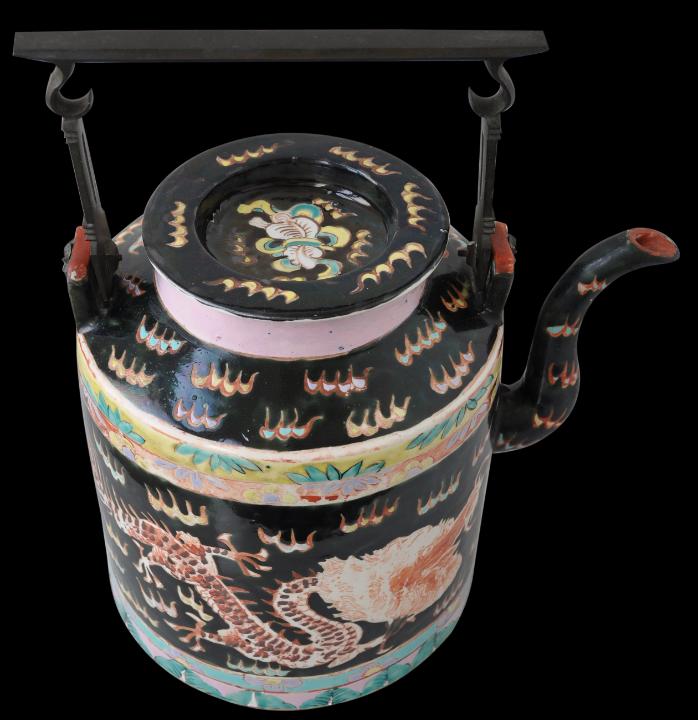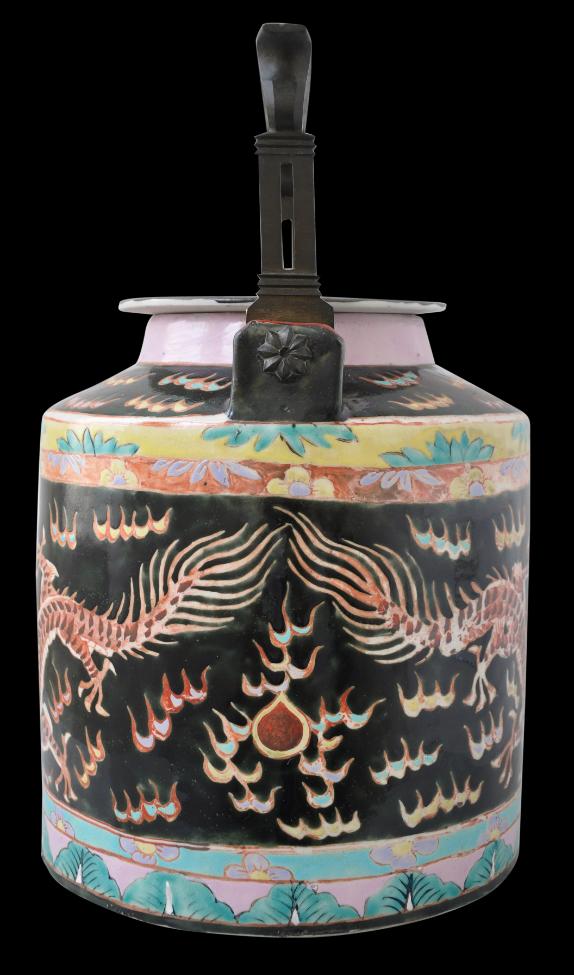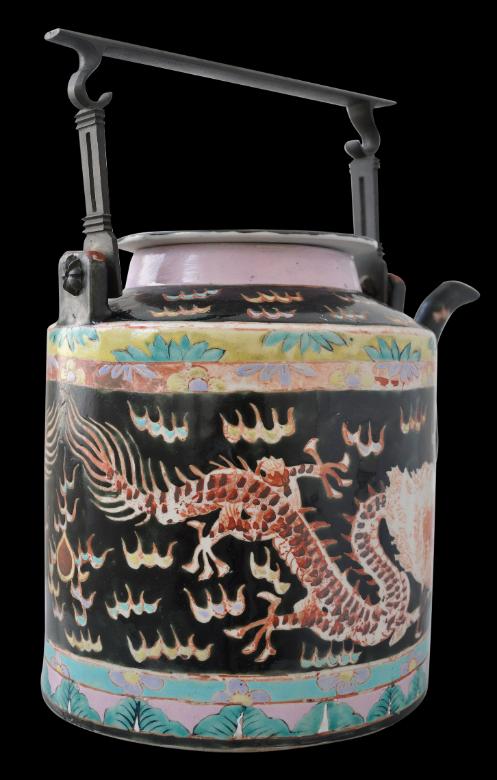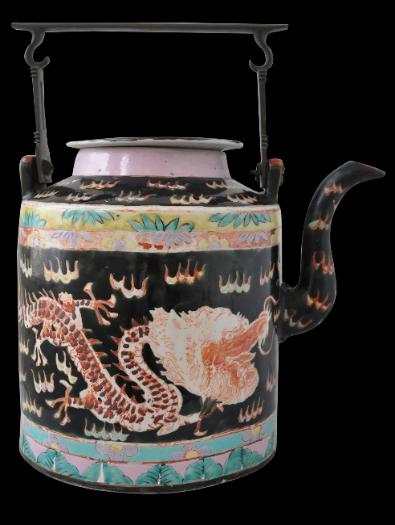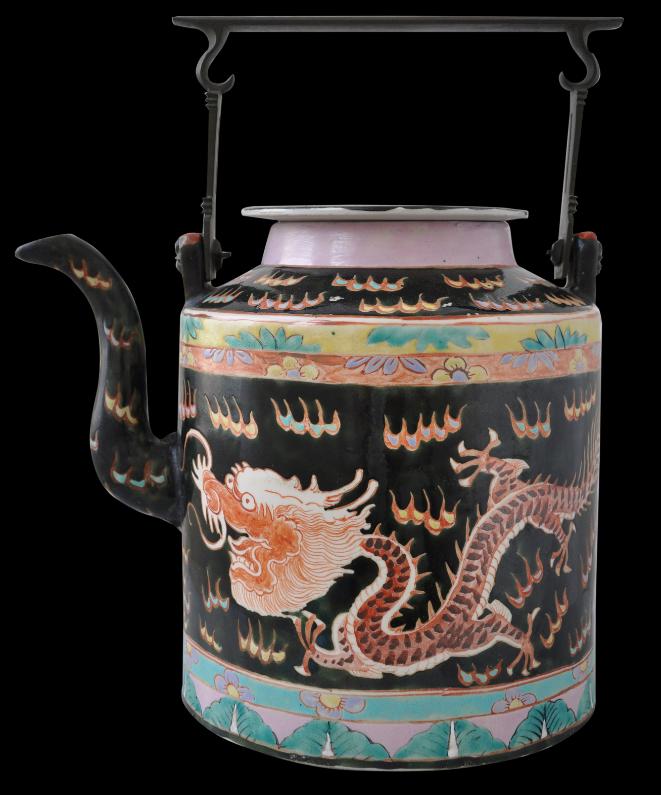
Bencharong Tea Pot, Thai
Large, Black Ground Bencharong Cylindrical Monastery Porcelain Teapot
China, for the Thai market
1860-1880
height: 33.5cm, diameter of base 21.3cm
This unusually large teapot was made in China for the nineteenth century Thai market. It is decorated in polychrome with typically Thai and Chinese motifs – principally, two dragons in coral red wrap around the sides of the teapot against a black ground and surrounded by Sino-Thai flame motifs. Two upper borders are decorated with coral-red and yellow grounds and infilled with various petal motifs. A lower border is decorated with a cabbage-leaf motif.
The lid, which is round, and sits in the well of the teapot, is decorated with a single Daoist motif, surrounded by more stylised flame motifs.
The handle (which is original) is of brass.
The underside of the base is plain and without maker’s or retailer’s marks.
The colourful enamelling shown on this teapot became known as
bencharong, a term that derives from two Sanskrit words – panch (‘five’) and rong (‘colour’) and which relates to the number of colours used to decorate such porcelain. In practice however the number of colours tends to vary between three and eight. Such porcelain was commissioned usually from the southern Jiangxi province, and exported to Thailand.
What was the purpose of such a large teapot? An example of similar form and proportions but decorated mostly with more typically Chinese rose medallion patterns is in the Doris Duke collection. Tingley (2003, p. 82) suggests that it may have served as a rice wine vessel rather than a teapot. McGill (2009, p. 211) says that such large teapots were favoured as pious gifts to temples and monasteries where they could be used to serve tea to groups of monks. Another example is in the Surat Osathanugrah Collection, Bangkok, and illustrated in Sng
et al (2011, p. 240.)
The teapot is in good condition. There is some rubbing from use to the enamel decoration. The spout may have come off at one time and been applied, but this is not clear. Otherwise, there are no chips or cracks.
References
McGill, F. (ed.), Emerald Cities: Arts of Siam and Burma, 1775-1950, Asian Art Museum, 2009.
Sng, J., P. Praphai Bisalputra & E. Siu,
Bencharong & Chinaware in the Court of Siam: The Surat Osathanugrah Collection, Chawpipope Osathanugrah, 2011.
Tingley, N.,
Doris Duke: The Southeast Asian Art Collection, The Foundation for Southeast Asian Art and Culture, 2003.
Provenance
UK art market
Inventory no.: 1821
SOLD
to see another example.

